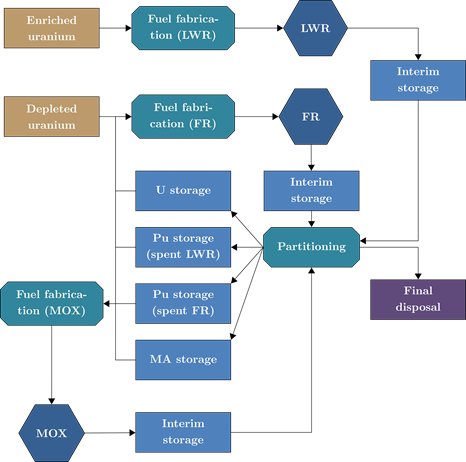Most fuel cycle simulation codes use burn-up tables or parametrized cross-sections to calculate fuel depletion in the reactors. A fast burn-up scheme called FITXS was developed at BME NTI, which is based on the parametrization of one-group microscopic cross-sections as functions of the detailed fuel composition, capable of providing accurate results in very short computational time even when multiple recycling of the fuel is considered. The FITXS method was used to develop burn-up models of Generation IV fast reactors, as well as MOX (Mixed OXide) fuel assemblies of Generation III thermal reactors in order to investigate their operation in closed fuel cycle operation. The burn-up models were integrated in the fuel cycle simulation codes JOSSETE (Object oriented simulation program for scenario studies), which is developed at BME NTI and SITON v2.1, which is developed at the Hungarian Academy of Sciences Centre for Energy Research.

Current research topics in nuclear fuel studies at BME NTI:
- Equilibrium closed fuel cycle studies for Generation IV fast reactors;
- Transition scenario studies involving mixed fleets of Generation IV fast reactors and Generation III thermal reactors;
- Analysis of fissile material breeding and minor actinide burning based on Markov chain models of nuclear transmutation.
Main publications:
M. Halász, M. Szieberth: "Markov chain models of nuclear transmutation: Part I – Theory". Annals of Nuclear Energy 121 (2018) 429-445 DOI
M. Halász, M. Szieberth, S. Fehér: "FITXS: A fast and flexible burn-up scheme based on the fitting of one-group cross-sections". Annals of Nuclear Energy 104 (2017) 267-281 DOI

